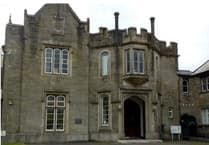In 1966, at the age of 68, an energetic retired nurse named Bessie Lillian Carter applied for a position at the United States Peace Corps.
Most of the applicants were young – ready to take up the flame of international service that President John F Kennedy ignited when creating the Peace Corps.
Bessie, who went by Lillian, was accepted.
Lillian was sent to India where she worked for 21 months aiding patients with leprosy.
Ten years after this deeply formative experience in her life, her son James “Jimmy” Carter was elected President of the United States.
As the world reflects on the life of global service and human dignity that defines the life of President Carter, the example of his mother was a profound motivator for him.
Political leaders are rightfully assessed on their effectiveness while in office.
Historians delve deeply into the defining events of the time in which the politician served.
They pour over speeches, review letters, weigh policy initiatives, interview colleagues who served with them.
But to only assess that window of when an individual held the reins of power would be incomplete.
A leader must also be evaluated for what they did after they held office – whatever or wherever that office was. The aftermath of political service is vital.
President Carter truly set a standard for the ideal qualities of a former President of the United States.
In fact, I submit he is one of the best former US Presidents in American history.
He left a model for former leaders around the globe to follow and emulate – many already have.
Of particular note was President Carter as a domestic and international humanitarian following his presidency.
While in the White House, President Carter placed significant focus on global poverty and human rights.
He was distinguished in this regard, and his commitment was sincere.
While dejected after his loss to President Reagan in 1980, President Carter maintained a passion for continuing to focus on the downtrodden.
He knew there was significant work to be done.
In 1982, he, along with several committed leaders and scholars, opened The Carter Center.
The mission of the Carter Center is to resolve conflicts and improve human health through a commitment to human rights and fair elections.
This vision and the work that blossomed out of the Carter Center was a key part of what led President Carter to become a Nobel Peace Prize recipient.
President Carter and former first lady Rosalynn Carter also became tireless advocates for social justice and basic human rights through a number of entities including an organisation called Habitat for Humanity.
Habitat brings people together to build homes, communities and hope.
The Carters were right there building homes and bonds with people of so many varied backgrounds.
President Carter recently went into hospice care at his home in Plains, Georgia. He is 98.
There is a tenderness to his final moments flickering away, but a strength in his example that will always burn bright.
His star will be one to guide by.
He once said: “You can do what you have to do, and sometimes you can do it even better than you think you can.”
There were few better than James Earl Carter, Jr. His late mother Lillian would have beamed for the legacy of decency her son gifted the world.




.jpeg?width=209&height=140&crop=209:145,smart&quality=75)
Comments
This article has no comments yet. Be the first to leave a comment.